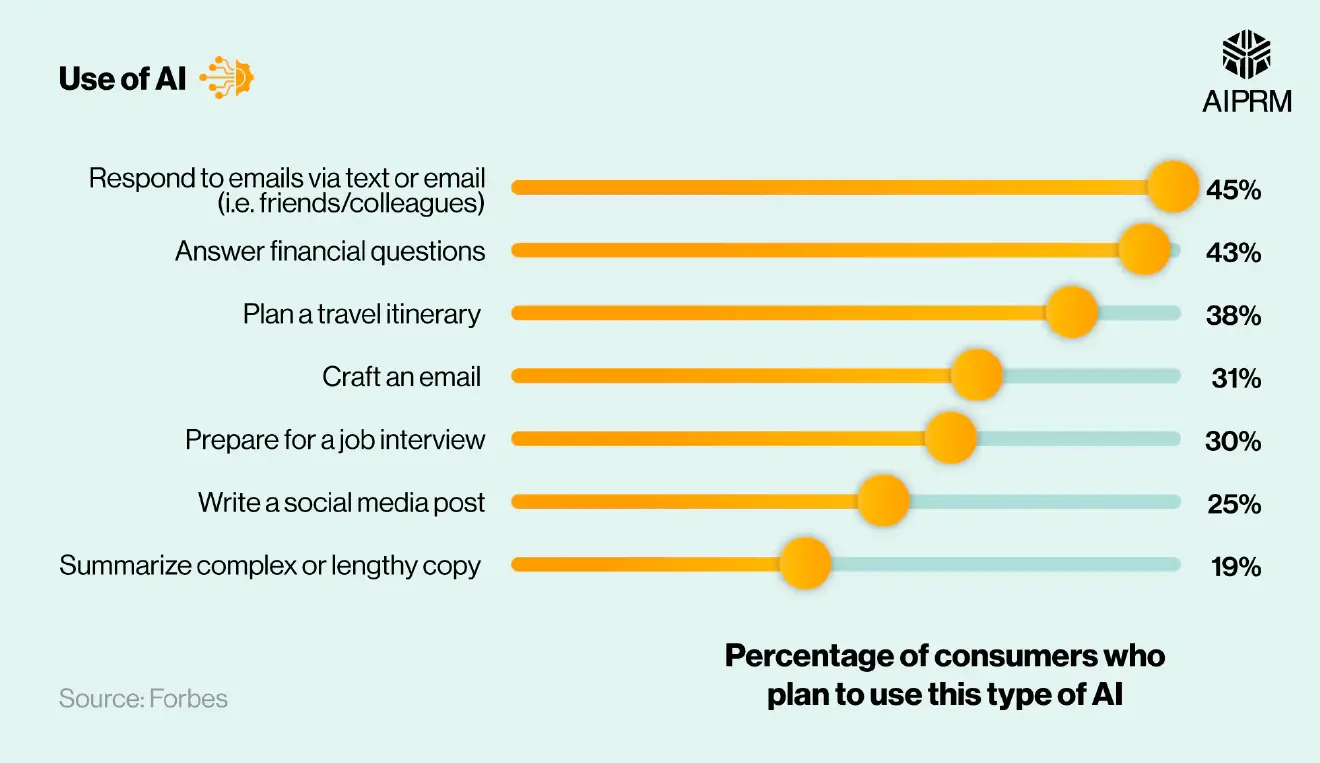Traditional AI vs Generative AI: Who Will Rule the AI Realm in 2025?

Key Highlights
- Examine the critical distinctions between mainstream artificial intelligence and generative artificial intelligence, plus how the two can affect healthcare, finance, and the arts.
- Discuss the developments in both fields, such as machine learning, natural language processing, neural networks, etc, and their impact on competition.
- Examine what current information experts anticipate about the future supremacy of one of these AI types, market demand, ethical issues, and possible regulatory factors that will define the structural AI world by 2025.
AI stands for Artificial Intelligence, one of the most popular trends in the economic world that revolutionises companies and their relationships with technologies. Thus, the topic of AI is as popular now as ever, and the market is growing – estimated to reach trillions of dollars.
At the heart of this discussion are two key players: Traditional AI and Generative AI.
According to IBM’s report, over 34% of companies use AI, and over 30% of IT professionals admit that their colleagues use AI-powered tools to finish mundane tasks.

(Source: AIPRM)
Machine learning, as part of the traditions of AI, is primarily focused on data analysis, modelling, and process automation. It has been incredibly beneficial in various industries, such as the financial, health, and manufacturing industries because it has led to efficiency in multiple operations and improved decision-making. On the other hand, Generative AI is one of the most immense forces reshaping creativity and content generation as it can write music, painting artwork, and even whole narratives.
This new wave of AI seeks to mimic or surpass human ingenuity, which is why it is stimulating. Let’s understand the primary difference between Traditional AI and Generative AI, the inherent characteristics of the techniques, their advantages and limitations, and the domains in which they might be beneficial.
What is Traditional AI?
Traditional AI describes several systems as “narrow” AI because they are trained to do a specific job or address particular issues. While General AI is a concept developed to make machines think like humans and understand, Traditional AI is centred on specific tasks – where trends can be defined easily.
Key Characteristics
- Rule-Based Systems: In most traditional implementations of AI, solutions are proactively coded to include specific rules and sets of algorithms. Indeed, it operates on clear instructions to analyse data and make actual decisions.
- Machine Learning: Most traditional uses of AI employ a machine learning category where the algorithms are trained through data used in the future for enhanced performance.
- Predictive Analytics: This type of AI searches for correlations between existing data sets to make future predictions and is often used in finance and marketing.
Examples of Traditional AI
- Chatbots: Chatbots offer pre-programmed answers and, therefore, can respond to the customer’s questions in a short amount of time.
- Recommendation Systems: Companies like Amazon and especially Netflix use recommendation systems as algorithms that recommend relevant products or content based on the client’s previous actions.
- Spam Filters: Email services use conventional AI to sort spam messages since they contain particular characteristics and patterns.
Key Subsets of Traditional AI
- Expert Systems: These are computer programs that emulate the decision-making capability of an expert in that given field.
- Natural Language Processing (NLP): Although there is a growing and more sophisticated NLP research, traditional AI employs NLP for tasks such as sentiment analysis, text classification, and limited language processing – commonly where keywords are recognised.
- Computer Vision: This subset helps machines to recognize and comprehend visual stimuli from the world. Conventional uses of AI include elements such as image recognition, more specifically, and facial recognition.
What is Generative AI?
Generative AI is an advanced category of AI that creates new content, ranging from written texts to graphics, music, or even virtual worlds. While Traditional AI involves learning about content and interpreting and re-processing discovered information, Generative AI consists of learning from content and using the acquired knowledge to create new content. It has paved the way for new opportunities in creative industries and many others.
Key Characteristics
- Creativity: Creativity in generative AI is employed to capture natural creativity, which can create genuinely new content that is sometimes astonishing to users.
- Data-Driven Learning: It has enormous amounts of data with which to discern patterns, styles, and structures, and with which it can then generate contextually appropriate outputs.
- Adaptive Learning: Other models can also be refined, as generative models are designed to learn from feedback and the data generated in the future.
Examples of Generative AI
- Text Generation: AI renders ChatGPT, which synthesises realistic textual responses to produce articles, poems, etc., in response to triggers provided by its user, et al., 2021).
- Image Creation: OpenAI’s DALL-E and Midjourney can create images based on the description from a text, enabling the users to see something that hasn’t been created yet.
- Music Composition: Such applications as MuseNet generate new compositions in different styles and become a unique source for artists and performers.
Key Subsets of Generative AI
- Generative Adversarial Networks (GANs): This model involves the training of two neural networks: a generator, which generates new data, and a discriminator, which assesses the authenticity of the data.
- Variational Autoencoders (VAEs): VAEs, specifically, are intended to learn an encoder-responsive-compressor-decoder mapping function. They are applied to iterate the generation of images and identify anomalous behaviours.
- Transformers: The architecture underlying many of these models is GPT (Generative Pre-trained Transformer). The authors stress that the transformers are suitable for processing sequential data; therefore, the algorithm can be helpful in applications such as text generation or translation.
Critical Differences Between Traditional AI and Generative AI
Traditional AI and Generative AI are highly useful in the technological world, even though they have unique characteristics and functions. Understanding the differences is essential to know how each kind of AI could benefit different industries.
Purpose
Traditional AI: Intended to address particular issues, repay mundane work and process information. It is specially designed to search for patterns and generate decisions based on history.
Generative AI: Not focusing on the selling strategy, it is designed to develop novelties and something new, providing the strategy of creating the product that was absent before, instead of a copywriting strategy.
Output Type
Traditional AI: It can deliver prearranged outputs, which may be in the format of predictions, classification, or recommendations concerning input data.
Generative AI: Create text, images, music, and other non-hierarchical output that include a format similar to human random imagination.
Learning Mechanism
Traditional AI is more concerned with a supervised learning approach in which models are trained with input/output mappings.
Generative AI: Dependent on or combines unsupervised and supervised learning, enabling models to operate based on unlabeled data patterns.
Examples of Use Cases
Traditional AI: Used in fraud detection systems, human-like customer chatbots, and predictive maintenance.
Generative AI is used for creative purposes such as content writing, art designing, music composing, or any field like gaming or virtual environments. Also, the use of Generative AI in software development boosts developers’ productivity by automating code creation.
Complexity of Output
Traditional AI: Results widely correlate with expectations, with outputs responsive to explicit behaviour models and ascertainable guidelines.
Generative AI: There will usually be multiple outputs from each process, and it can generate something unexpected and creative that defies usual conventions.
| Feature | Traditional AI | Generative AI |
|---|---|---|
| Purpose | Solve specific problems | Create new content |
| Output Type | Structured (Predictions, classifications) | Unstructured (text, image, music) |
| Learning Mechanism | Supervised learning | Semi-supervised learning |
| Use Cases | Customer support, fraud detection | Art creation, content generation |
| Output Complexity | Predictable and simple | Complex and varied |
When a company decides to develop products using artificial intelligence, it’s essential to understand several critical aspects of AI development that can significantly impact the outcome.
By understanding these critical aspects of AI development, companies can create products that meet their business needs and align with ethical standards and technological advancements. This strategic approach enables businesses to harness the power of AI effectively, driving innovation and competitive advantage.
Traditional AI Use Cases
Conventional AI exists in almost all sectors; it employs tools that improve productivity, operations, and decisions. Here are some notable use cases:
Fraud Detection
Traditional AI systems capture real-time fraudulent transactions in the finance sector.
According to the research, JP Morgan Chase, Bank of America, and other financial institutions can identify suspicious activity and prevent their customers from being ripped.
Customer Support
Some organisations avail themselves of the services of chatbots by integrating them with artificial intelligent solutions to respond to customers’ requests immediately.

(Source: ChatbotGuide)
For instance, Sephora employs a chatbot on its website and an application that assists customers with inquiries, product recommendations, or appointments. These bots incorporate Natural Language Processing to process customer questions and provide adequate answers to increase general customer satisfaction.
Predictive Maintenance
Today’s manufacturing industries, including General Electric, use traditional AI for predictive maintenance.
Recommendation Systems
A famous example of traditional AI is recommender systems on eCommerce websites like Amazon and streaming services like Netflix. These systems use users’ interaction history, preferences, and purchase history and recommend suitable products or content to increase such users’ engagement and purchase rates.
Image and Speech Recognition
Automotive AI includes speech and image recognition; these AI are part of the traditional AI. For example, Google Photos contains an AI component that organises photos according to content to facilitate a search. In the same way, people use virtual personal assistants and digital helpers such as Siri and Alexa, which are based on artificial intelligence, to screen and respond to user requests and make routine tasks less bothersome.
Generative AI Use Cases
Generative AI is making a distinct impact in all fields by developing new ideas and solutions and fulfilling the aspects of creativity and productivity. Here are some notable use cases, along with examples of brands leveraging this innovative technology:
Content Creation
Organisations and content creators across the media industry use generative AI tools like OpenAI’s ChatGPT to write articles, blogs, and even social media posts. For instance, BuzzFeed has incorporated generative AI into its content marketing and utilises it to develop articles and other exciting quizzes to devise and generate content faster.
Art and Design
A painter can draw or paint using text descriptions through the artists’ rendering and similar services, including DALL-E and Midjourney. For instance, Nike has incorporated generative design inside shoe designs and logos by trying out new types of models and pioneering different shoe looks that embrace current fashion trends but remain Nike’s shoes.
Video Game Development
In the gaming industry, generative AI is an application to design fascinating worlds or plots. Ubisoft has used generative AI to improve character conversation and plot creation, providing better games.
Music Composition
With generative AI solutions such as AIVA and Amper Music, musicians can generate unique tracks from different genres and moods. Warner Music Group has endeavoured to utilise AI to aid song creation, which allows artists to test sounds and tracks for a shorter period.
Personalised Marketing
Some of the current uses of generative AI include Coca-Cola’s use of generative AI in its marketing strategies. The customers’ data that falls within these systems can thus make specific advertisements or product recommendations that suit the individual customers, leading to enhanced engagement and conversions.
AI generation is a disruptive technology in various industries that allows brands to improve creativity and customer experience while reducing workload.
Level Up the AI Game: Traditional vs. Generative AI
Relating to the modern development of AI, Traditional AI and Generative AI serve different but equally essential functions.
- Also, traditional AI is great for accomplishing highly formalised tasks, such as identifying fraud, providing customer support, and predictive maintenance.
- Conversely, we can create new content, art, and individuality based on Generative AI.
To this end, it becomes crucial for businesses to comprehend the various types of AI and their strengths and areas of use that will give a competitive edge to any company seeking to incorporate the technology.
At Guru TechnoLabs, we do not just anticipate the trend; we start it while offering Traditional and Generative AI solutions. From regular business process improvement, pursuing traditional advancements, and analytical problem-solving to availing core generative sciences for creating products and services, we are here to help. Contact us now and discuss how we can turn ideas into tangible reality!
Frequently Asked Questions
Traditional AI, often based on rule-based or supervised learning, focuses on classification, prediction, and data analysis tasks. It learns from existing data to make decisions or identify patterns. On the other hand, Generative AI creates new content—such as text, images, or music—by learning patterns from the data it was trained on.
Responsible AI refers to the ethical development and deployment of AI technologies, ensuring they are fair, transparent, and accountable. Generative AI, on the other hand, is a specific type of AI focused on creating new content. While generative AI can be developed responsibly, the term does not inherently imply ethical considerations.
Traditional AI applications include:
- Predictive analytics (e.g., forecasting sales)
- Natural language processing (e.g., chatbots)
- Image recognition (e.g., facial recognition systems)
Generative AI applications include:
- Content creation (e.g., generating articles, music, or art)
- Image synthesis (e.g., creating realistic images from text descriptions)
- Chatbots and virtual assistants that engage in human-like conversations
Each serves distinct purposes: traditional AI excels in tasks requiring analysis of existing data, while generative AI shines in content creation. The two can complement each other, enhancing overall AI capabilities within a business or application.
The choice between traditional AI and generative AI depends on your business goals. Consider your needs, available data, and desired outcomes to determine the best fit.




















